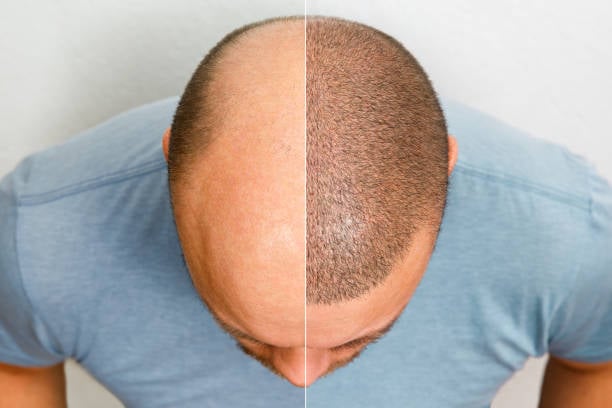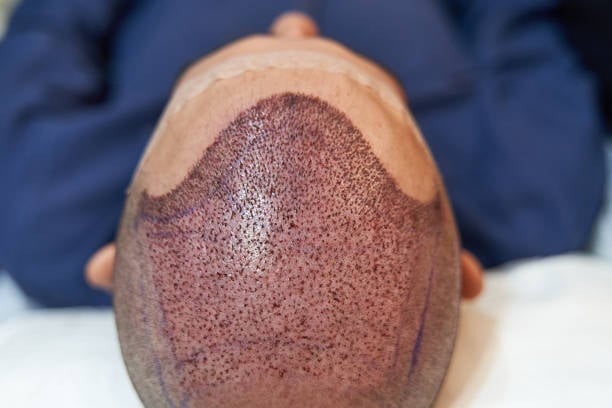Introduction to Hair Transplants
Hair loss is a concern affecting millions worldwide, and modern advancements in hair restoration offer effective solutions. Among these, Hair Transplant in Riyadh(زراعة الشعر في الرياض) has gained significant popularity for its advanced techniques and high success rates. But who exactly is the ideal candidate for this procedure? Understanding the eligibility criteria is crucial for those considering this transformative treatment.
What is a Hair Transplant?
Definition and Procedure Overview
A hair transplant is a surgical technique where hair follicles are moved from one part of the scalp (donor area) to another (recipient area) experiencing hair loss.
- Utilizes natural hair from the patient.
- Involves methods like FUE (Follicular Unit Extraction) or FUT (Follicular Unit Transplantation).
- Performed under local anesthesia for minimal discomfort.
Benefits of Hair Transplant
- Provides permanent results.
- Restores a natural hairline.
- Boosts self-esteem and confidence.

Key Factors That Determine Eligibility
Understanding Hair Loss Patterns
Not all hair loss conditions qualify for a transplant. Factors include:
- Patterned Hair Loss: Best suited for individuals with androgenetic alopecia or male/female pattern baldness.
- Stable Hair Loss: Candidates must have a stable donor area with sufficient hair follicles.
General Health and Lifestyle
Good health is essential to ensure a safe and successful procedure.
- No underlying health issues affecting healing.
- Non-smokers or individuals willing to quit smoking before surgery.
- Realistic expectations about the results.
Who is the Ideal Candidate for Hair Transplant in Riyadh?
Individuals with Permanent Hair Loss
Temporary hair loss due to stress or medical treatments may not require surgery. An ideal candidate is someone experiencing permanent hair loss due to:
- Genetics (male/female pattern baldness).
- Trauma or scalp injuries.
- Surgical scars or previous procedures.
Adequate Donor Hair Availability
The success of a Hair Transplant in Riyadh relies on having enough donor hair to cover the balding area.
- Donor hair usually comes from the back or sides of the scalp.
- Dense and healthy hair in the donor area ensures better results.
Realistic Expectations
Understanding what a hair transplant can and cannot achieve is key.
- Results depend on the extent of hair loss and donor hair quality.
- Hair density may not match the original, but significant improvement is expected.
Age Considerations for Hair Transplant
Optimal Age for the Procedure
While there’s no fixed age, most experts recommend waiting until hair loss stabilizes.
- Early 30s to 50s is often considered the ideal age range.
- Younger individuals may not have stable hair loss, leading to uneven results later.
Exceptions to the Rule
Some younger patients with specific conditions or older candidates with good health may still qualify.
- Evaluation by a specialist determines eligibility.
Psychological Readiness for Hair Transplant
Motivation and Mindset
Being mentally prepared is as important as physical eligibility.
- Candidates should seek the procedure for personal satisfaction, not societal pressure.
- Understanding the recovery process and timeline is crucial.
Emotional Benefits of Hair Transplant
- Restores self-confidence and self-image.
- Reduces anxiety or self-consciousness about appearance.
Common Misconceptions About Eligibility
Myth 1: Hair Transplants are Only for Men
While male pattern baldness is more common, women with thinning hair or specific bald patches are also excellent candidates.
Myth 2: It’s a Solution for Complete Baldness
A hair transplant requires donor hair, so individuals with severe baldness and no donor hair may need alternative treatments.
Preparing for a Hair Transplant
Pre-Operative Guidelines
Proper preparation ensures the best outcomes.
- Avoid smoking and alcohol.
- Stop certain medications under medical advice.
- Follow a healthy diet to support healing.
Selecting the Right Technique
The chosen method (FUE or FUT) depends on:
- The size of the area requiring treatment.
- Hair density in the donor area.
- Personal preferences and recovery goals.
Post-Procedure Expectations
Recovery and Aftercare
Healing is an essential part of the journey to restored hair.
- Initial swelling and redness are common but subside within days.
- Transplanted hair may shed initially before regrowing permanently.
Long-Term Results
With proper care, results are visible within 6–12 months.
- Transplanted hair blends naturally with existing hair.
- Regular follow-ups ensure optimal outcomes.
Why Choose Hair Transplant in Riyadh?
Advanced Facilities and Expertise
Hair Transplant in Riyadh is known for combining cutting-edge technology with skilled professionals.
- Access to the latest FUE and FUT techniques.
- Stringent hygiene standards ensure patient safety.
Competitive Pricing
Riyadh offers high-quality procedures at reasonable costs compared to other global cities.
- Transparent pricing with no hidden fees.
- Customizable packages for diverse needs.
Alternatives for Non-Ideal Candidates
Non-Surgical Options
For those who may not qualify for a transplant, alternative treatments include:
- Platelet-Rich Plasma (PRP) therapy.
- Low-level laser therapy.
- Medications like minoxidil or finasteride.
Scalp Micro-Pigmentation
A cosmetic solution to create the illusion of fuller hair for individuals with limited donor hair.
Conclusion
Determining the ideal candidate for a Hair Transplant in Riyadh involves assessing multiple factors, including the type of hair loss, donor hair availability, and overall health. This life-changing procedure not only restores hair but also boosts confidence and self-esteem. With Riyadh’s advanced facilities and skilled professionals, patients can expect world-class results tailored to their unique needs. Before making a decision, consult a qualified specialist to ensure the best possible outcomes tailored to your situation.

